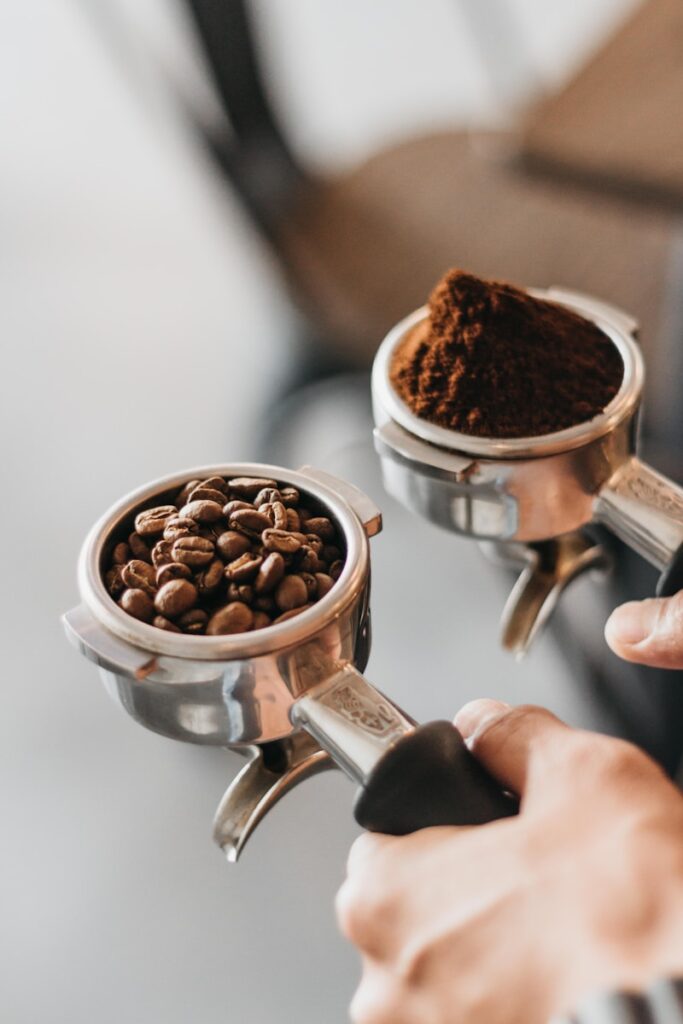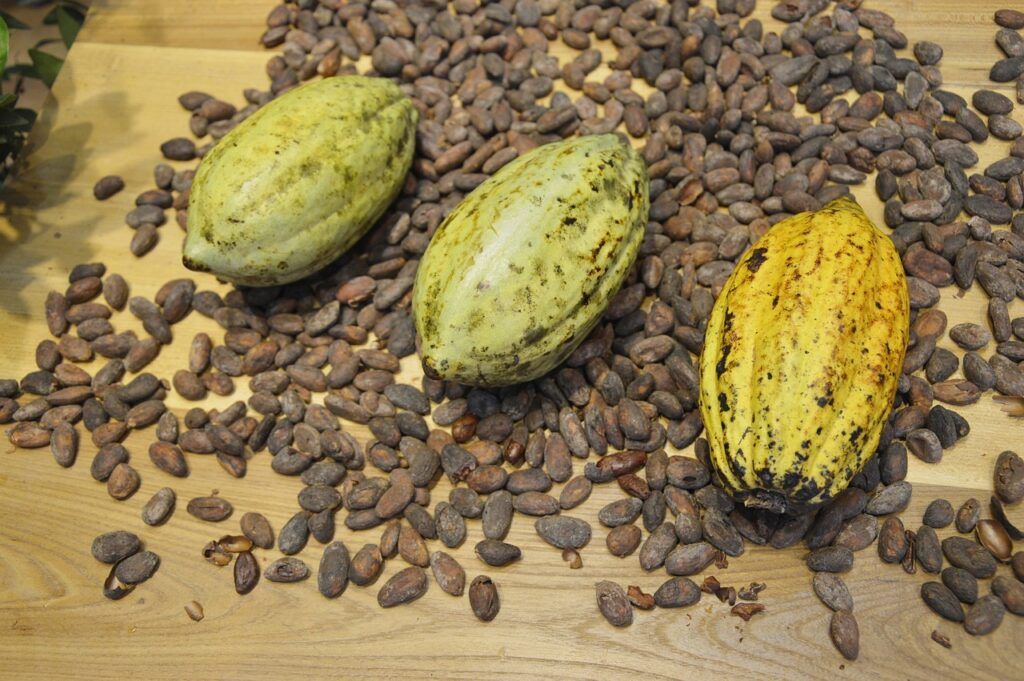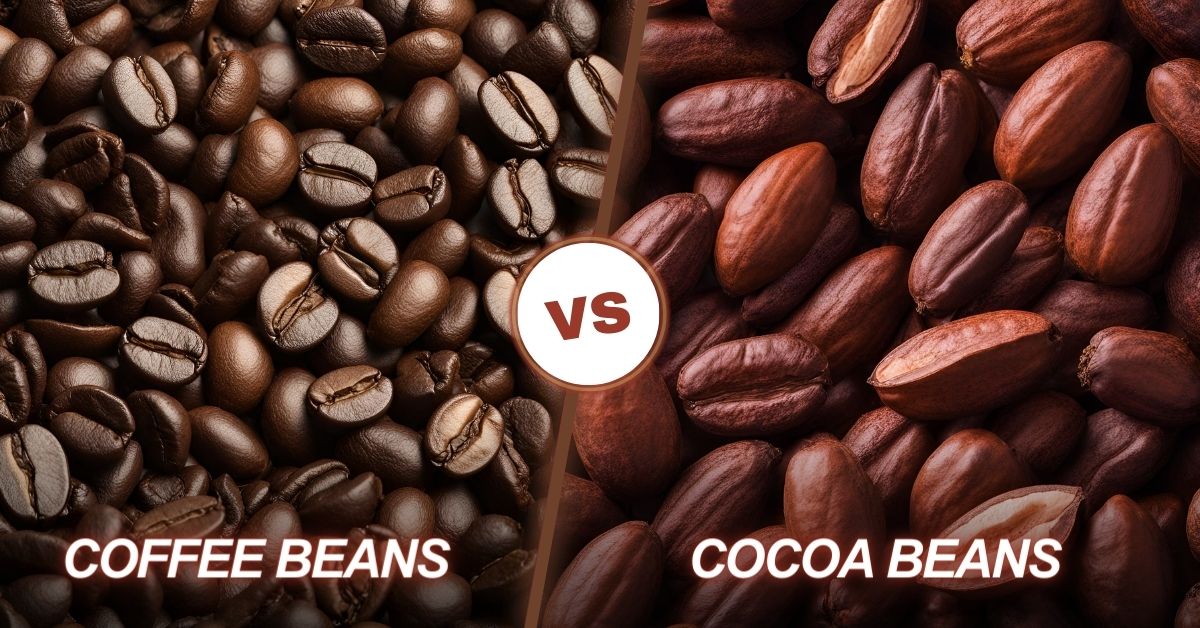Coffee Beans vs Cocoa Beans: Exploring Their Unique Worlds
The aromas of espresso and chocolate are universally loved, conjuring comfortable mornings or indulgent cakes with just a whiff. At the heart of these beloved flavors lie exquisite beans: coffee and cocoa. Despite their obvious similarities, they hail from awesome botanical backgrounds, undergo extraordinary processing strategies, and, of the path, make contributions to vastly one-of-a-kind taste stories.
In this blog, we will delve into the captivating worlds of coffee beans vs cocoa beans, exploring their origins, processing, fitness advantages, and culinary makes use of.
Coffee Beans:
Coffee beans are at the heart of one of the world’s most beloved beverages, coffee. They are seeds from the fruit of the Coffea plant, which grows predominantly in the equatorial regions known as the coffee Bean Belt. This includes Central and South America, Africa, Asia, and the Middle East.

Characteristics:
- Types and Varieties: Coffea arabica (Arabica) and Coffea canephora (Robusta) are two main species of coffee plants. Arabica beans are more flavorful and have a lower caffeine content, while Robusta beans are stronger, more bitter, and contain more caffeine.
- Growing Conditions: Coffee plants require specific climatic conditions that include a lot of rain and no frost. They grow best at high altitudes in tropical climates.
- Processing Methods: Once the coffee cherries are harvested, they undergo processing which can be dry (sun-drying the whole cherries) or wet (removing the pulp before drying the bean). This is followed by roasting, which significantly influences the flavor and aroma of the coffee.
- Flavor Profile: Coffee’s flavor profile can vary widely depending on the type of coffee bean, where it is grown, and how it is processed and roasted. Flavors can range from sweet and fruity to earthy and nutty.
- Caffeine Content: Coffee is well-known for its caffeine content, which can help improve focus and energy levels. The amount of caffeine can vary depending on the type of bean and the brewing method.
Cocoa Beans
Cocoa beans, the essential ingredient in all chocolate products, originate from the Theobroma cacao tree, which is native to the tropical regions of the Americas. The beans are extracted from the large, colorful pods of the cacao tree and undergo a unique process to develop their distinctive flavor and characteristics.

Characteristics of Cocoa Beans
- Botanical Origin: Cocoa beans come from the Theobroma cacao tree, a native to the tropical rainforests of Central and South America.
- Processing: After harvesting, the beans are fermented under banana leaves, dried, roasted, and then separated from their husks. The remaining cocoa nibs can be further processed into cocoa mass, butter, and powder.
- Flavor Profile: Cocoa has a natural bitterness that is mellowed through fermentation and roasting. The final product can vary in flavor from fruity and tangy to deeply rich and earthy, depending on the variety and processing.
- Nutritional Content: Cocoa is high in flavonoids, particularly epicatechin, which are powerful antioxidants with potential health benefits.
Coffee Beans vs Cocoa Beans:
| Feature | Coffee Beans | Cocoa Beans |
| Origin | Native to tropical Africa, cultivated globally in the Bean Belt. | Native to the Amazon and Orinoco river basins, cultivated in equatorial regions. |
| Botanical Name | Coffea arabica, Coffea canephora (robusta) | Theobroma cacao |
| Climate | Requires a lot of rain and no frost, grown in tropical climates. | Thrives in humid, warm conditions typical of tropical rainforests. |
| Harvesting | Beans are seeds of cherry-like fruits, harvested manually or mechanically. | Beans are seeds from large, colorful pods, usually harvested manually. |
| Processing | Includes drying (either sun-dried or wet-processed), followed by roasting. | Involves fermenting under banana leaves, drying, roasting, and separating from husks. |
| Flavor Profile | Ranges from fruity and light to dark and bold depending on roast. | Rich and deep, with a natural bitterness that can be modified through processing. |
| Health Benefits | High in antioxidants, associated with reduced risks of several diseases. It can cause nervousness and insomnia in excess. | Rich in flavonoids, promotes heart health, and reduces inflammation. High in calories when consumed as chocolate. |
| Culinary Uses | Used in brewing, as well as in spice rubs, marinades, and desserts. | Predominantly used in desserts, but also some savory dishes like mole. |
| Sustainability Concerns | Deforestation, water usage, fair labor practices. | Deforestation, child labor, fair labor practices. |
| Ethical Sourcing | Fairtrade certifications are important for ensuring fair labor practices. | Fairtrade and ethical sourcing are crucial to improve labor conditions and sustainability. |
Choosing beans Between Coffee Beans vs Cocoa Beans:
Choosing between coffee beans and cocoa beans in large part relies upon your private preferences, intended use, and fitness considerations. If you enjoy a stimulating beverage that could decorate alertness and cognitive features, coffee beans are a superb choice, especially given their versatility in each culinary and beverage form.
On the other hand, if you decide upon something that can be used in both candy and savory dishes and offers cardiovascular and mood-enhancing blessings, cocoa beans are probably extra appropriate.
Both have their very own precise flavors and fitness blessings, however, they come with moral and environmental issues; consequently, choosing fair-exchange and organically grown products is beneficial. Ultimately, thinking about your nutritional wishes, flavor possibilities, and any health sensitivities will guide your decision correctly.
FAQs:
Are coffee beans the same as cocoa beans?
No, coffee and chocolate are not the same. Coffee and chocolate come from two different plants. Coffee “beans” (they’re seeds) are derived from a cherry-like fruit that grows from a coffee plant — a woody evergreen that can grow up to 32 feet.
What is the difference between cocoa and coffee?
Coffee likes a hot-and-fast approach while cacao requires less heat and more time. This is, in part, due to the size of the beans. On average, the weight of cacao is 10 times that of a coffee bean. Flavor development for both begins at the point when moisture loss occurs.
Can I replace cocoa with coffee?
Yes, you can. But don’t expect it to be a chocolate cake. Also, the quantity of coffee must be 1/6 the amount of cocoa powder you would have used for chocolate cake. Otherwise, your cake will turn bitter.
Which is healthier, cocoa or coffee?
Cacao contains antioxidant flavanoids, and the cardiovascular stimulant theobromine, both of which result in a whole host of heart-related benefits. Caffeine, by contrast, has been linked to heart problems.
Conclusion:
Coffee beans and cocoa beans each hold unique roles in global cuisine and culture. Coffee beans, valued for their stimulating effects and versatility in beverages, contrast with cocoa beans.
Which are fundamental to chocolate production and cherished for their rich flavor. Both beans not only support major global industries but also enhance our dietary and cultural practices, offering distinct tastes and benefits that cater to diverse preferences around the world.
